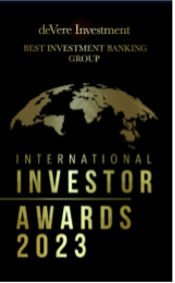We all know that a well-diversified portfolio is essential for wealth creation and growth, but we don’t always understand how the diversified funds we invest in are compiled. They often consist of a combination of asset classes, sectors and economic regions, but what does it all mean?
To spread investment risk, investments are diversified or scattered over areas that are not correlated. Meaning if one area performs poorly, the other areas are not affected or sometimes even perform well.
Fortunately, we have access to investment experts such as financial advisors and fund managers who do the stress work for us.
Below we explain what these areas mean and what they are comprised of.
What’s on this page?
1. Fund composition explained
2. What are Asset classes?
3. Economic regions
4. Sectors
5. Risk classification
Asset Classes
Asset classes are investments that exhibit similar characteristics and are subject to the same laws and regulations.
You will often see that investment funds consist of various assets. Usually, equities have the highest percentage weighting and then followed by bonds, cash, real estate and commodities.
Equities or Stocks – Here, we talk about owning shares or stocks in companies. Successful companies earn favourable returns and increase the value of shares held by investors. Many investors use equities as a way to build wealth, as equities tend to produce the highest fund performance and returns. For example, shares in tech companies have produced favourable returns in the last few years.
Bonds or Fixed income – are investments that pay a fixed income. The investor lends money to a government, for example (government bonds) in exchange for a fixed pay-out at maturity. Bonds are less risky, offering more stability to a portfolio than equities, but also generally offer lower returns.
Cash and Cash equivalents – Cash and cash equivalents represent actual cash on hand and securities that are similar to cash. This type of investment is considered very low risk since there is little to no chance of losing your money. That peace of mind means the returns are also lower than other asset classes.
Examples of cash and cash equivalents include cash in a savings account, cash or a money market account etc. Generally, the greater the risk of losing money, the greater the prospective return.
Real Estate – Buying or investing in property has always been a good investment. It can provide a passive income or be used as an asset that grows in value over the years.
Commodities – These are basic goods like metals, energy and agricultural goods. Their returns are based on supply and demand. Usually, investors would invest in companies that supply these goods.
Alternatives – Property can be considered an alternative investment class, but could also refer to artwork, NFTs, hedge funds, venture capital and cryptocurrencies for example.
Economic Regions
These are self-explanatory and refer to regions such as the EU, Asia, the US, Australasia or Latin America, for example. They all react differently to global events but may impact other regions depending on trade and commerce. It could also refer to individual countries.
Sectors
According to the Global Industry Classification Standard (GCIS) there are currently 11 sectors on the stock market. Investment funds often consist of several sectors to maintain diversification.
The largest sectors are IT, Healthcare, Consumer Discretionary and Financials.
Energy – The energy sector includes companies that are involved in the exploration, production, refining and transport of oil and other hydrocarbons, as well as oil and gas equipment. Known companies include Shell and Exxon Mobil, for example.
Materials – These are companies that produce chemicals, glass, paper, metals, construction materials and steel etc.
Industrials – This includes aerospace, defence, electrical and construction equipment etc. Companies include Boeing, 3M, Caterpillar (CAT)
Consumer discretionary – These are basic consumer products like, car manufacturers, clothing, sporting and leisure, restaurants, hotels, retail etc. Major companies are Amazon, Sheraton Hotels and Tesla.
Consumer staples – Everyday products in food, drink, tobacco, household goods, superstores and pharmacies. Companies could include Coca-Cola, P&G and Walmart.
Healthcare – Healthcare includes companies that provide healthcare services, technology, equipment and biotech research and production, like Pfizer and Johnson and Johnson.
Financials – One of the better-known sectors, financials include banking, mortgages, consumer finance, investment banks, brokerage firms and insurance companies. Big Brands include Berkshire Hathaway, JP Morgan Chase and HSBC.
Information technology – This we all know about with the recent massive profits of Nvidia group. This is in software development and production, IT products and services, semiconductors, AI development and research, mobile phones and computers.
Communication services – Telecommunications, media and entertainment companies and gaming. Big names include Disney, Meta platforms, Verizon and Nintendo.
Utilities – These are companies that provide electricity, water and gas as well as energy distributors.
Real Estate – This sector covers real estate services, developers and Commercial Property groups. Examples are IPG, REMAX and the controversial China Evergrande group that was billions in debt and recently appeared in the news.
Risk Classification
Investing is risky, and there are no guarantees of good returns. Funds usually have a risk rating according to their possibility for loss. The chance for higher potential losses means higher risk but also could mean higher returns.
Funds generally have low, balanced, moderate, moderately aggressive and aggressive risk ratings, depending on what areas the fund is composed of. For example, the fund manager could recommend an equity-based fund (stock market listed companies) which could lead to high returns, usually has a higher risk and could fall into the moderate aggressive or aggressive classifications, while bond-based funds offering lower returns could be considered balanced or low.
A well-diversified fund could consist of one or more of the above areas according to the specifications of the fund. Some funds focus on global equities, others on regional equities and some even focus on a balance of equities, bonds and cash.
Each person’s investing goals and risk profile are different, and it is the job of a qualified financial advisor to help you choose the right funds for your individual financial needs for good long-term growth and wealth building.
Please note, the above is for educational purposes only and does not constitute advice. You should always contact your advisor for a personal consultation.
* No liability can be accepted for any actions taken or refrained from being taken, as a result of reading the above.





